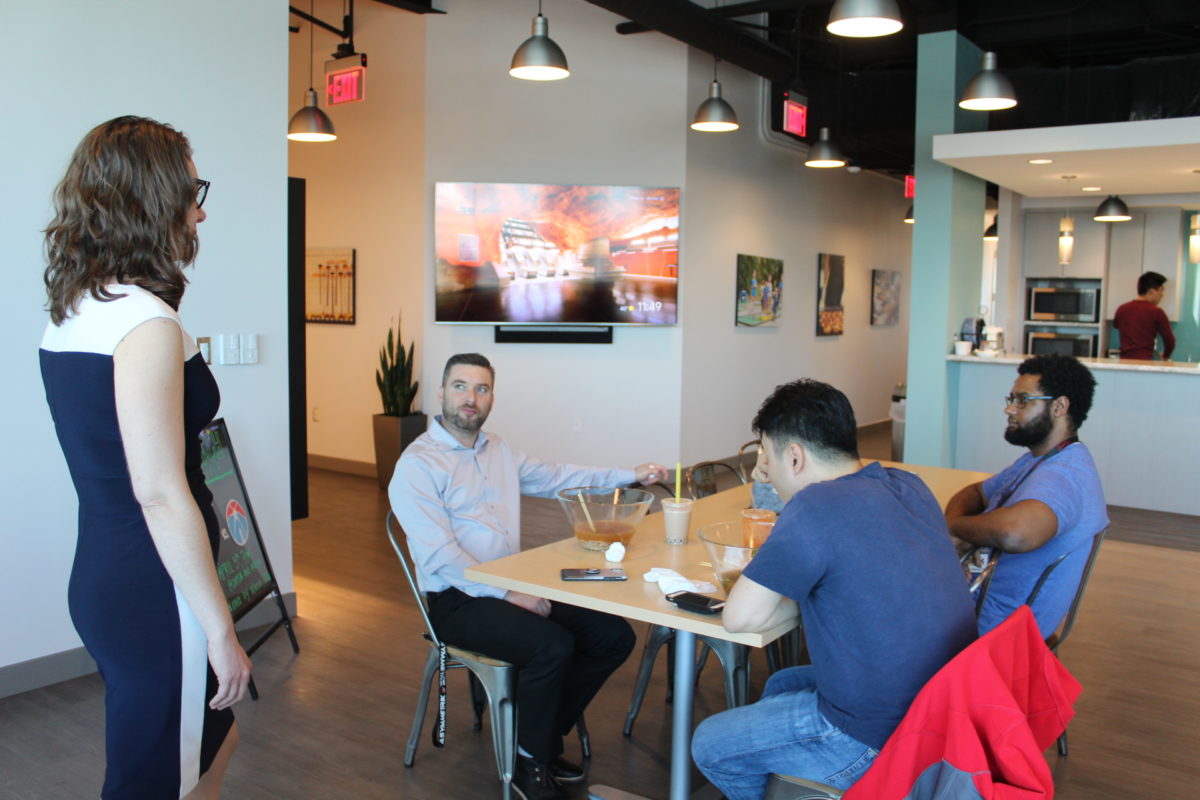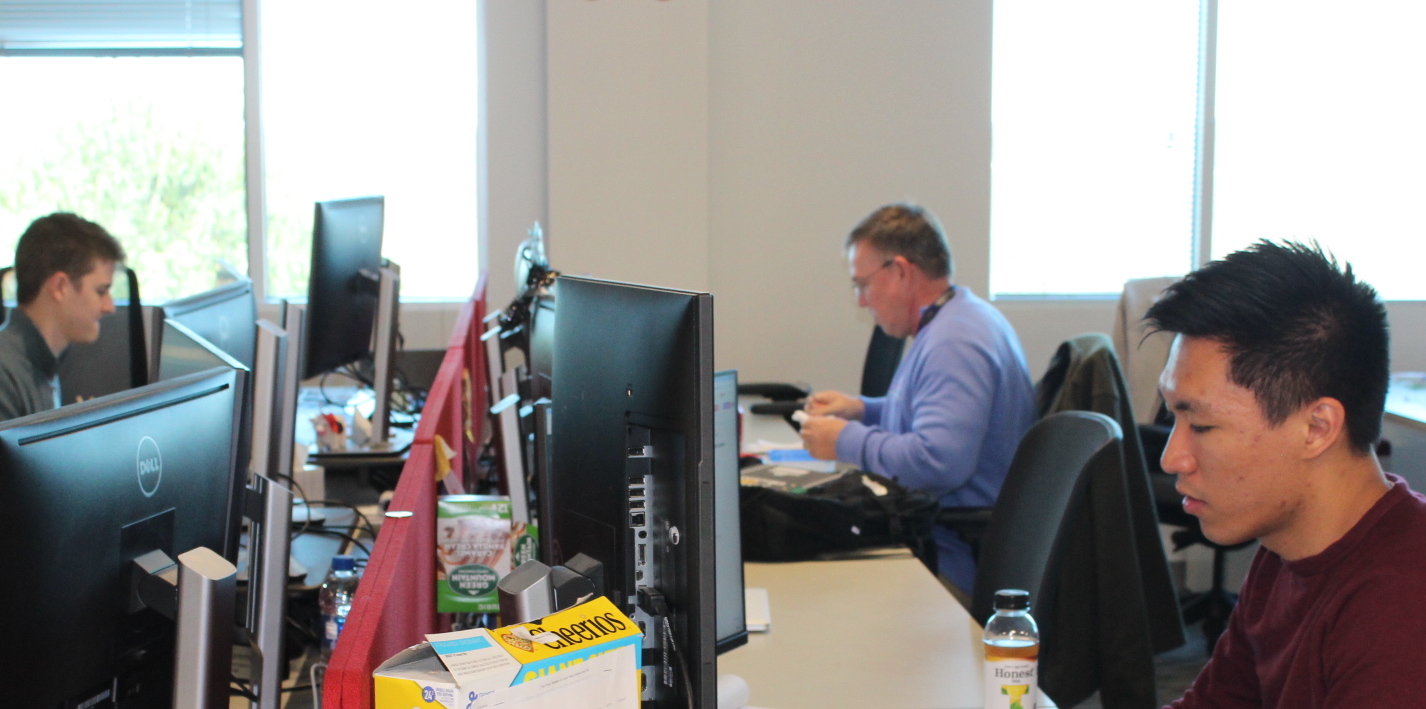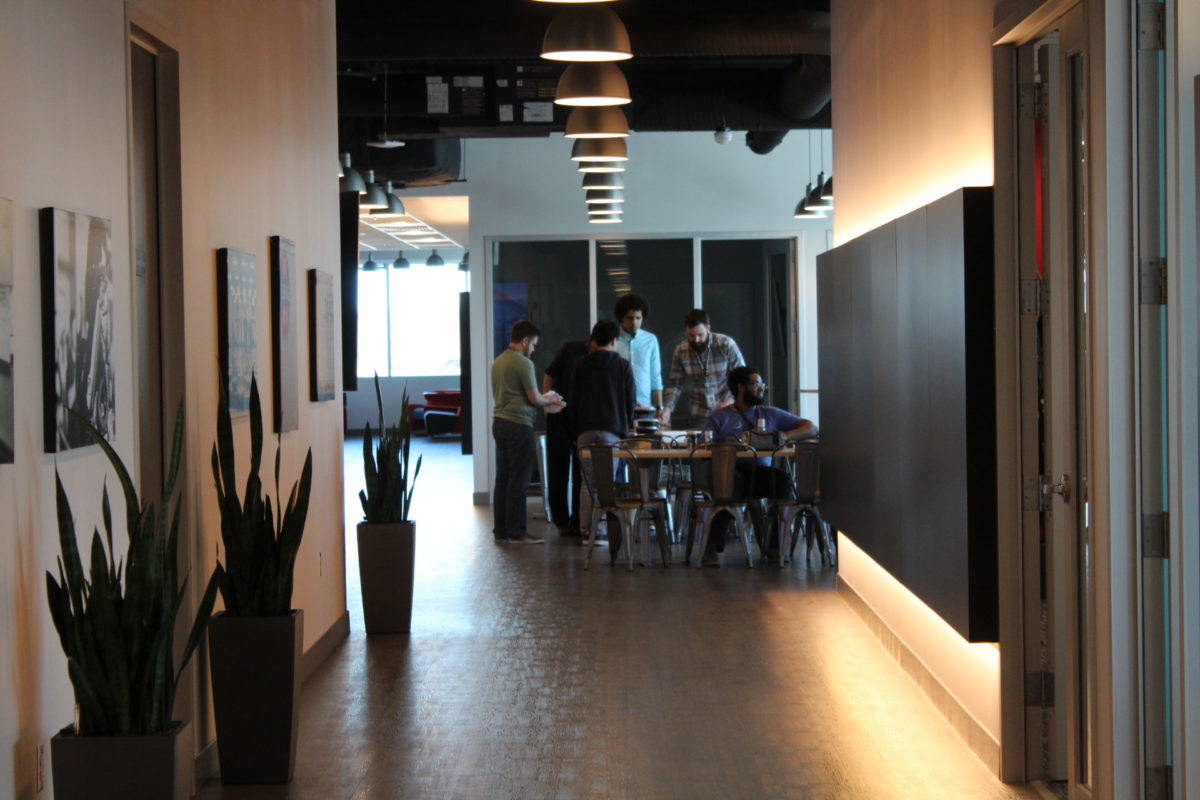When Kristen Davis came aboard as Asymmetrik’s user experience lead just over two years ago, her team was one graphic design intern. Today her six-person team consists of two UX designers, two UX-focused front-end developers, one graphic designer and a UX lead/director.
Davis has ushered in a slew of changes in bringing her user-centered design approach to the software development and data analytics firm, establishing company-wide UX standards and processes, integrating UX resources into every project team and division, implementing a fully-equipped in-house usability lab and more.
Today the company boasts improved user experience and user engagement in all Asymmetrik tools and solutions, thanks to a focus on incorporating the user into every step of the design process.
Technical.ly spoke to Davis about the impact her clear approach to UX design has had on Asymmetrik’s healthcare and government clients.

What does your typical day look like as UX lead at Asymmetrik?
Every day is different! I get to work on all the different phases within a project, and that keeps my role interesting and fresh. From a UX perspective, I’m either doing discovery, design or validation for our government and healthcare clients.
When I’m not supporting our clients, I help our internal branding, marketing, and business development teams in areas such as brand guidelines, processes and proposals. That’s what makes this role so exciting and fun, and keeps me on my toes while letting me use all of the tools in my UX tool kit.
You stick to a user-centered design approach. How do you achieve that and what does your design process look like?
For every project, you have to balance multiple elements: following a user-centered design approach; meeting the needs and expectations of the client; plus the project’s milestones, budget and timeline. So, how do we handle juggling and balancing these different priorities and needs?
Early on, our team makes sure to communicate and talk with the client. A lot. It’s important to set expectations and talk to key stakeholders that are either users of the system or the people setting the requirements. Once that’s set, we make sure there’s not a huge chasm between stakeholders’ expectations and what the users need.

After that, we go into a design phase. In this phase, we follow the design thinking process of having a brainstorming session with the entire team that’s involved to think through how to implement the requirements and how to meet the user needs.
We do whiteboarding sessions and start fleshing out how to account for everything we’re hearing from different perspectives. From there, the UX team goes into creating mockups. These can range from being really low-fidelity mockups using basic wireframing tools, to much more complex mockups with interaction and visual design using Axure or Sketch.
Before we begin development, we vet those designs to make sure we’re meeting the expectations of the users. We use their feedback so we can pivot if needed, or to validate that we’ve made the right decisions. Once the project goes into development, my team continues to engage the users. To build good systems that people actually want to use, this kind of communication is really important. Once the system is fully functional with the entire workflow and interaction design, that’s when we use more sophisticated types of user validation, such as usability testing.

What has been the biggest driver of growth for the UX team at Asymmetrik?
We grew so much because it quickly became apparent that incorporating a UX team created better, more usable tools. Our first project was supporting a healthcare consumer-facing solution and the process was wildly successful! On that project, we followed the full user-centered design approach, including two rounds of usability testing, and really engaging the team with building out the different aspects of this solution. The outcome of this is that team developed a tool which was intuitive, engaging and pleasing.
This showed the power of UX. Now, we are fully supporting all of the project teams as well as internal work at Asymmetrik.
It’s only been a little over two years since I joined. I’m so excited to continue building the team and incorporating UX at every step of the process within every aspect of our project work, and to see what can happen in another two years.
Learn more about Asymmetrik and browse open jobs






